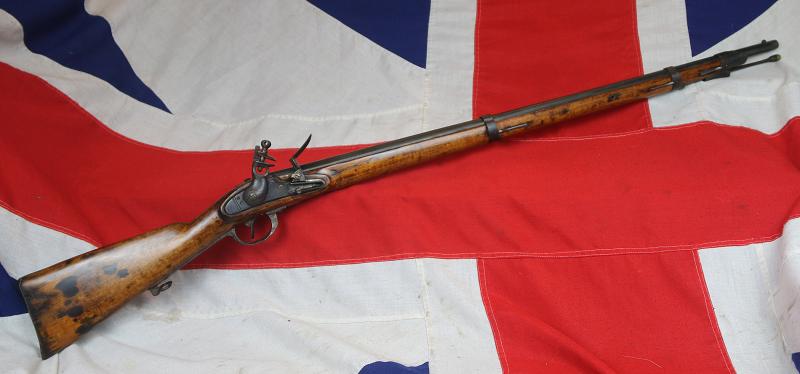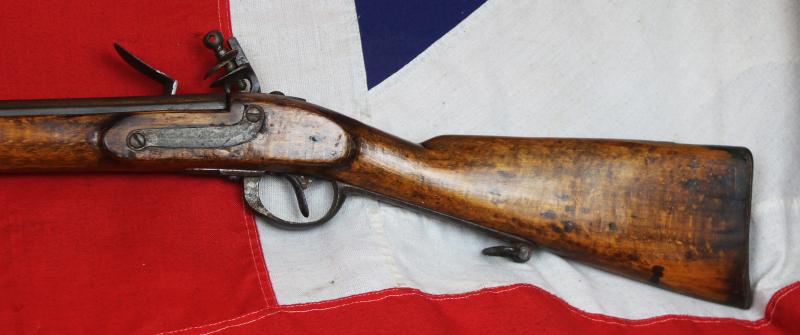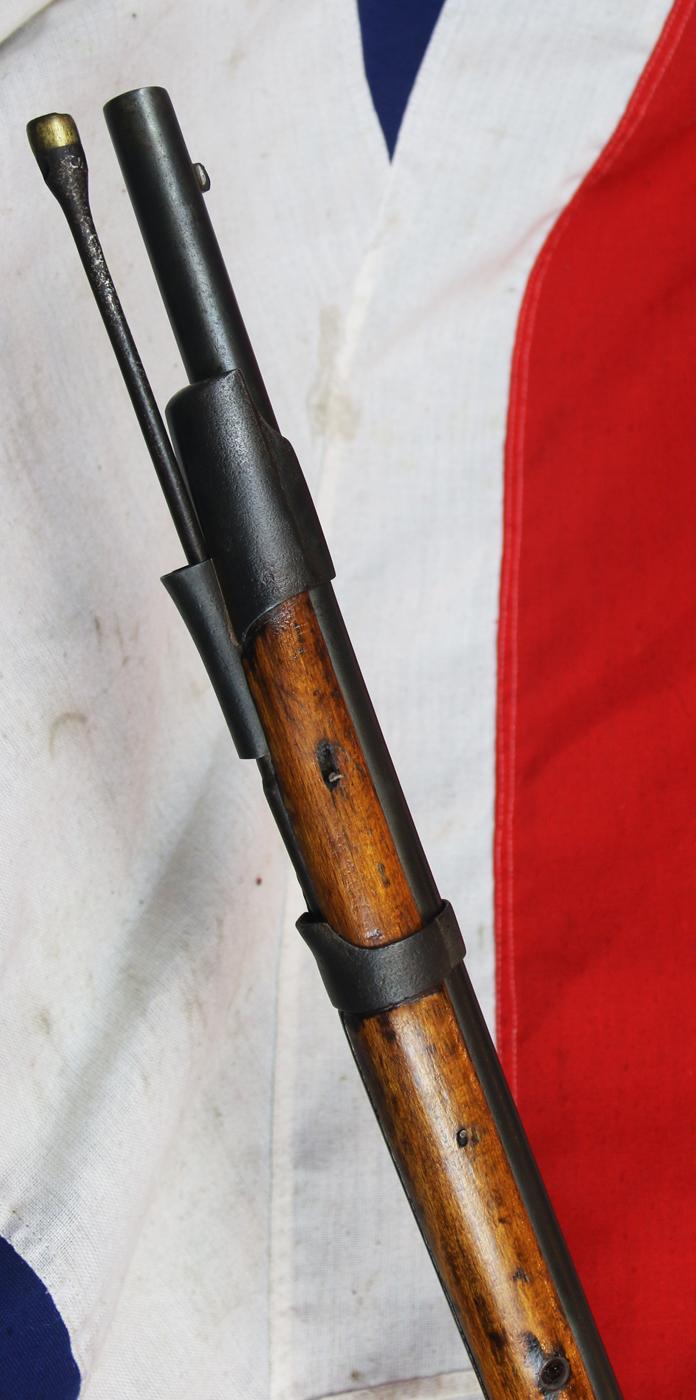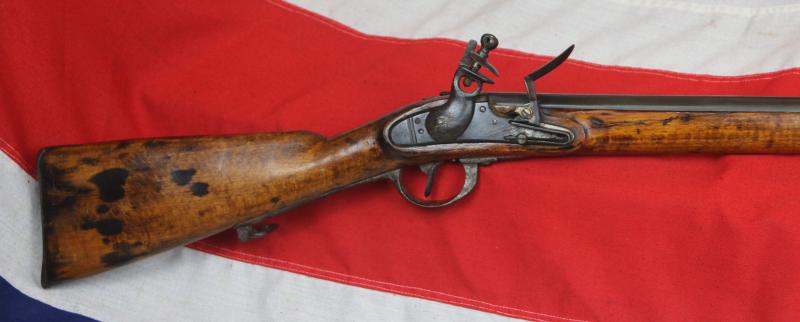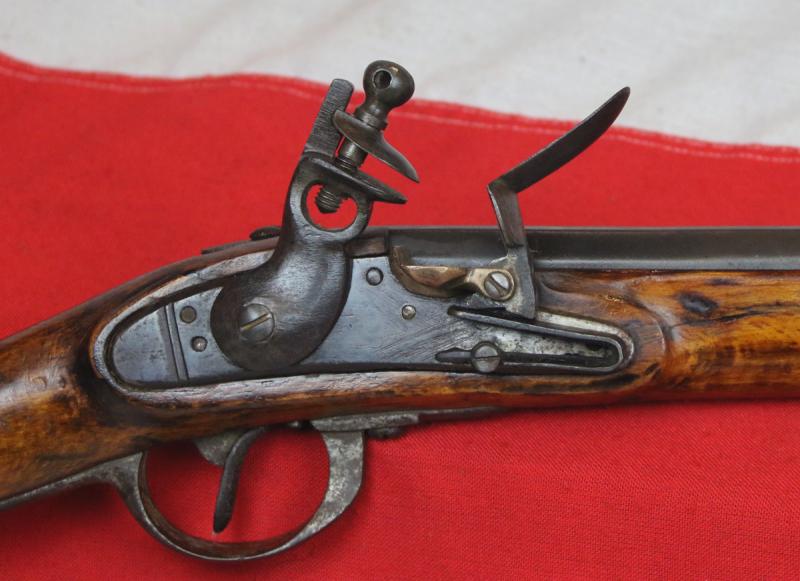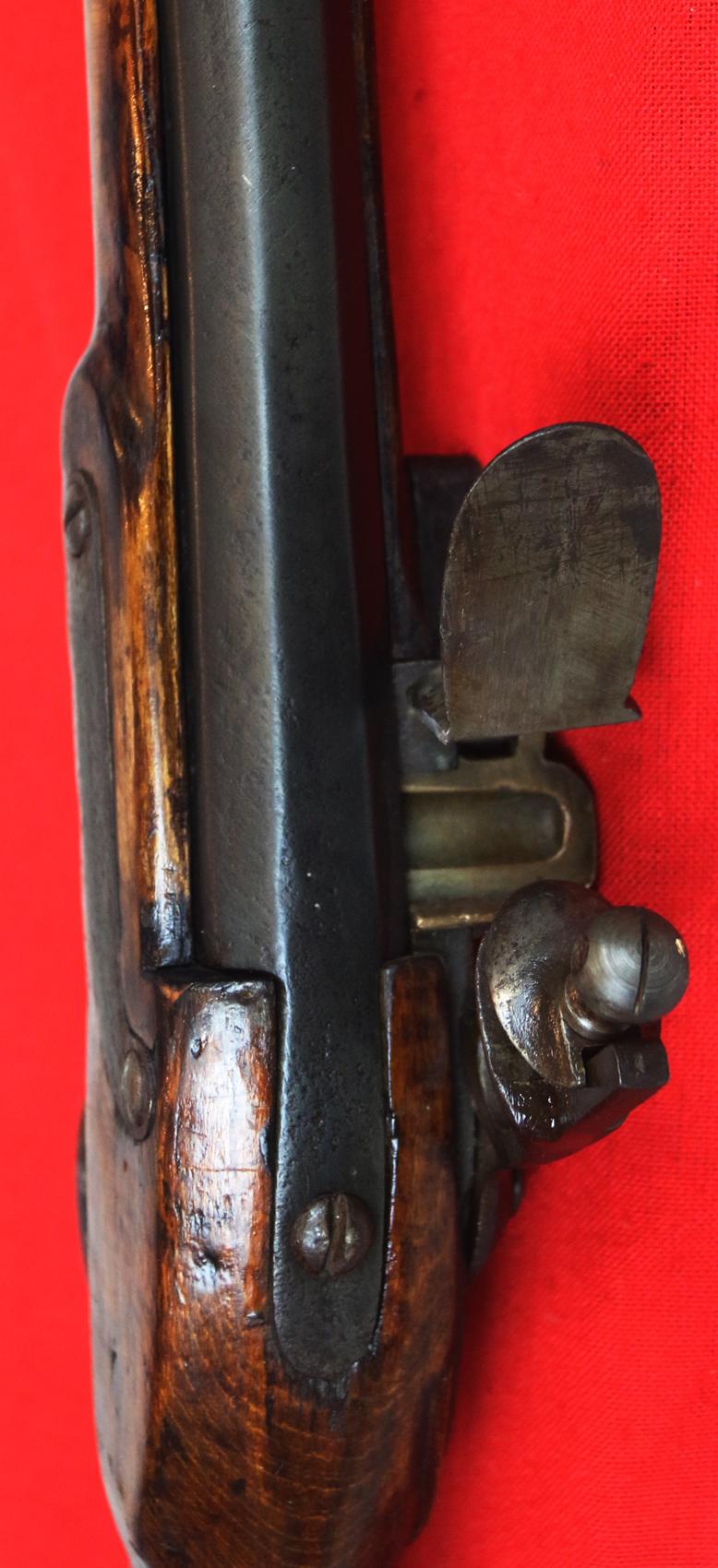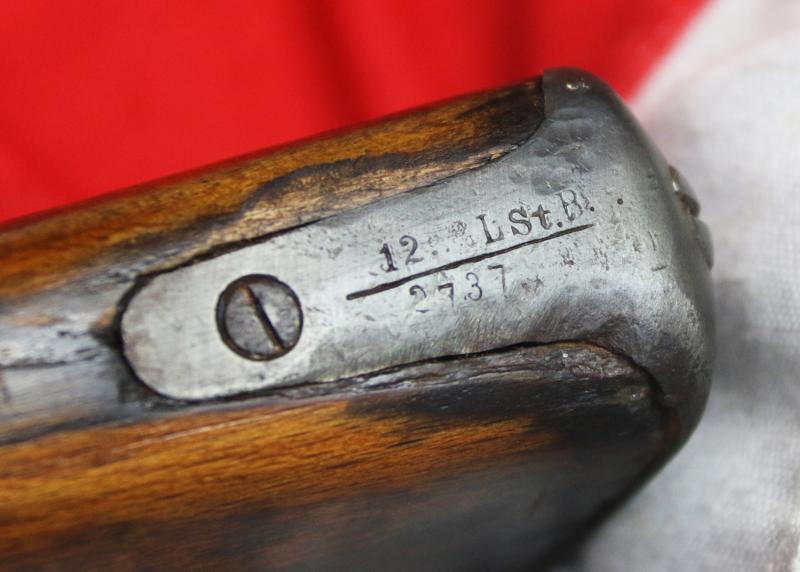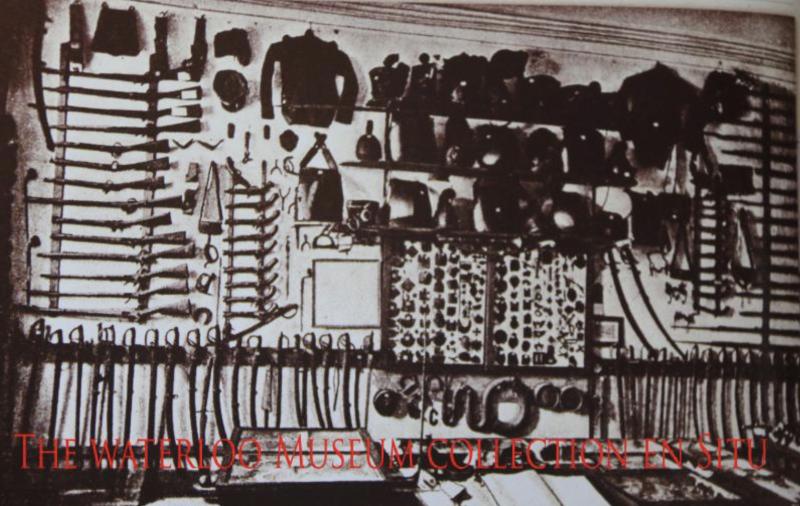A Good And Most Scarce Napoleonic Wars Regimentally Marked East Prussian Life Grenadier 'Guard' Regt. Rifle Musket
Marked on the butt tang a weapon number, or possibly a company number,12, then L.St B., likely the Lieb Stabawache Bat. {Life {Grenadier} Guard Staff Battalion}.
Regulation 133 cm long overall, with a rifled barrel and three steel barrel bands in 1809 the barrel bands were often made from steel instead of brass to save costs. Good flintlock action, superb patination overall and good stock.
Life Grenadier Battalion (Leib-Grenadier-Bataillon)
fought in over 21 battles during the Napoleonic Wars including: in 1807 -
Verteidg,
Colberg,
Sellnow,
Ausfallgefechte and
Wolfsburg.
1813 - Groß-Görschen,
Bautzen,
Katzbach,
Naumburg,
Hochkirch,
Reichenbach,
Bischofswerda,
Hänichen,
Möckern,
Freiburg and Hörselberg,
1814 - Montmirail,
Château Thierry,
Laon,
Trilport and Paris.
And an army of 50,000 Prussians fought at Waterloo under Blucher, and this musket’s user was thus likely attached to this army, possibly one of the 8,000 Prussians that were lost on the field of combat.
Historically, the Prussian army went through a radical reorganisation following Napoleon’s downfall in 1814. In October of that year the six existing grenadier battalions became two regiments and, as a mark of respect, the King of Prussia named these regiments after his allies, Czar Alexander of Russia and Emperor Francis of Austria. The Kaiser Alexander Grenadier Regiment was formed of the 1st and 2nd East Prussian battalions and the Life; the Kaiser Franz regiment was formed of men from the Pomeranian, West Prussian and Silesian battalions.
Prussia's catastrophic defeat at the hands of Napoleon in 1806-07 reduced the once-proud kingdom to an abject vassal of the Emperor of the French. The Prussian Army had been practically destroyed: At the twin battles of Jena and Auerstedt alone (14 October 1806) 38,000 Prussian troops were killed, wounded or captured, and more than 300 colors and standards were lost. Thus when the work of military reconstruction began in 1807 many regiments had to be rebuilt from scratch. The military reformers under General Gerhard von Scharnhorst consolidated the remaining units, renumbering many regiments in the process. A Prussian infantry regiment was now to be composed of two musketeer battalions, one fusilier battalion and two grenadier companies. The latter, however, were detached to form composite grenadier battalions, each four companies strong. Later these independent battalions were consolidated into two grenadier regiments, titled in honor of the Austrian and Russian Emperors. The line infantry regiments acquired territorial titles reflective of their recruiting areas. Infantry Regiment Nr. 1, for example, became Infantry Regiment Nr. 1 (East Prussian Nr. 1). The infantry of the Royal Guard, in 1806 consisting of the Liebgarde Regiment (Nr. 15, two battalions) and the Lieb Grenadier Battalion (Nr. 6), was also reconstituted, at first as a single regiment of Foot Guards. By 1815 there were two, along with a Guard light infantry battalion and a Guard rifle battalion. The 2nd Foot Guards Regiment was formed by amalgamating the Guard Grenadier Battalion with two battalions drafted in from the line; the latter continued to carry the colours of their old regiments. The two Guard regiments were organised like the line infantry, with two musketeer battalions, a fusilier battalion and two grenadier companies. The latter were detached to form the Lieb Grenadier Battalion. The last photo in the gallery shows a photograph of one section of the collection in the museum of Waterloo, taken in around 1900, showing all the weapons of Waterloo en situ, including all the protagonists {British, French, Prussian and Belgian muskets, swords, pistols, armour uniforms, etc}. The museum was founded and owned by a veteran of the 7th Hussars that fought at Waterloo.
Code: 24731
1995.00 GBP

